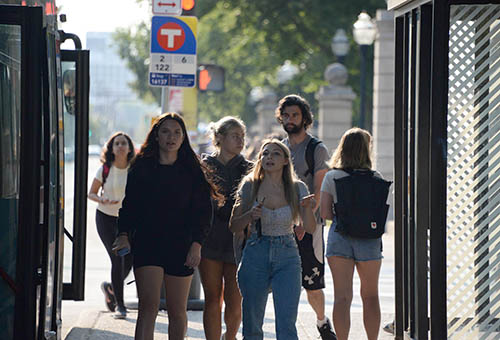Metropolitan Council transit ridership grew 16% to 48.7 million rides in 2023, the second consecutive year of growth following a pandemic-driven drop.
The region’s transit workhorse, Metro Transit, provided nearly 45 million of the total rides. The 2023 total includes more than 30 million bus rides (+14%) and 14.7 million light rail rides (+19%). Average weekday ridership was 136,893.
.aspx) “The strong ridership growth is due, most importantly, to our successful efforts to hire additional operators, and progress we’ve made on passenger safety and security,” said Charlie Zelle, Met Council chair. “Our objective is a safe and welcoming system. We’ve got more to do, but we’re seeing results and ridership growth is a strong signal that we’re moving in a good direction.”
“The strong ridership growth is due, most importantly, to our successful efforts to hire additional operators, and progress we’ve made on passenger safety and security,” said Charlie Zelle, Met Council chair. “Our objective is a safe and welcoming system. We’ve got more to do, but we’re seeing results and ridership growth is a strong signal that we’re moving in a good direction.”
After hiring more than 400 operators in 2023, Metro Transit local and bus rapid transit service is now at 90% of 2019 levels. Bus and light rail service will be further improved in 2024 as staffing levels allow.
The December 2022 opening of the METRO D Line also boosted ridership. The D Line’s average weekday ridership grew to around 13,000, twice the average weekday ridership on Route 5 from 2022. The D Line accounted for 8.5% of all rides in 2023. Overall, our bus rapid transit routes lost the least ridership during the pandemic and are rebounding faster.
Universal Transit Pass ridership grows 55%
Other Metro Transit ridership highlights from 2023:
 Universal Transit Pass holders took more than 2 million rides, a 55% increase from 2022. The program was expanded to all eligible University of Minnesota students in late 2022 and in 2023 was expanded to include faculty and staff.
Universal Transit Pass holders took more than 2 million rides, a 55% increase from 2022. The program was expanded to all eligible University of Minnesota students in late 2022 and in 2023 was expanded to include faculty and staff.- Access Pass holders took more than 2 million rides. This program is used by service agencies, counties, and medical providers to lower fare costs for Medicare and waiver program clients.
- Average weekday ridership on Route 21, the busiest local bus route, was around 8,400, up 27% from 2022. In June 2025, the B Line will largely replace Route 21.
- Average weekday ridership on routes 32 and 62 grew 38% and 18% from July through December, compared to the same months in 2022. A free fare pilot on these routes began in July 2023 and will continue through the end of this year.
In addition to Metro Transit and Metro Mobility, Metropolitan Council transit services include Transit Link, micro transit, and vanpool service. In 2023, ridership on Metro Mobility — shared ride transportation for certified riders who are unable to use regular fixed-route buses due to a disability or health condition — grew 6% to just over 2 million.
Travel patterns changing; Saturday travel grew fastest
In addition to evaluating total ridership, the Met Council is closely monitoring when and where service is in highest demand. Of note:
- The strongest ridership is in the core, where service is most widely available and where people are more likely to ride for a variety of trip purposes.
- Ridership is highest from 3 to 4 p.m. on weekdays, reflecting a rise in flexible commutes and strong demand from high school and college students.
- The busiest weekdays are Tuesdays and Wednesdays.
- Weekend ridership is growing faster than weekday ridership.
What’s next
To meet the growing and changing demand for transit service, Metro Transit will continue efforts to hire operators, maintenance staff and other positions needed to expand service and maintain high reliability. This spring, we will also release a draft of future service improvements as part of the Network Now project.
Learn more
Review a 2024 ridership presentation (PDF) and explore ridership trends by mode.